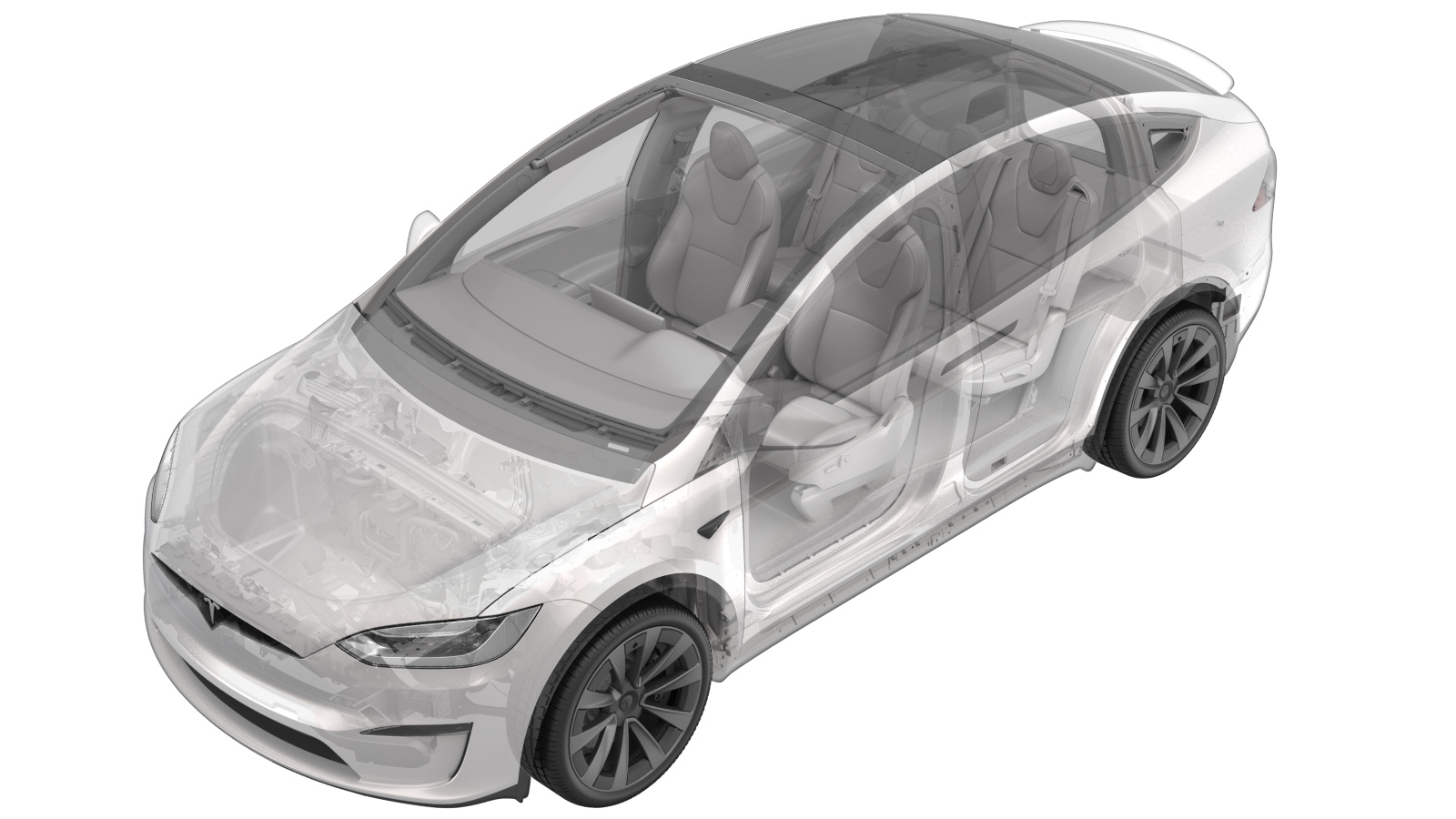Busbars - Charge Port to HV Battery (Remove and Replace)
 Correction code
44013102
1.92
NOTE: Unless otherwise explicitly
stated in the procedure, the above correction code and FRT reflect all of the work
required to perform this procedure, including the linked procedures. Do not stack correction codes unless
explicitly told to do so.
NOTE: See Flat Rate Times to learn
more about FRTs and how they are created. To provide feedback on FRT values, email ServiceManualFeedback@tesla.com.
NOTE: See Personal Protection to make sure proper PPE is worn when
performing the below
procedure.
Correction code
44013102
1.92
NOTE: Unless otherwise explicitly
stated in the procedure, the above correction code and FRT reflect all of the work
required to perform this procedure, including the linked procedures. Do not stack correction codes unless
explicitly told to do so.
NOTE: See Flat Rate Times to learn
more about FRTs and how they are created. To provide feedback on FRT values, email ServiceManualFeedback@tesla.com.
NOTE: See Personal Protection to make sure proper PPE is worn when
performing the below
procedure.
- 2023-08-25: Added link to charge port voltage check procedure.
Remove
- Open all the doors and open all the windows.
-
Move the driver and front passenger
seats fully forward.
- Open the hood.
- Remove the rear underhood apron. See Underhood Apron - Rear (Remove and Replace).
- Open the liftgate.
-
Open the charge port door.
- Remove the LH and RH rear sill panel trims. See Trim - Sill Panel - Rear - LH (Remove and Replace).
- Remove the 2nd row floor mat.
- Remove the 2nd row mid floor panel. See:
-
Move the LH and RH 2nd row seats fully
forward, if equipped.
- Remove the LH and RH side rear trunk garnishes. See Garnish - Rear Trunk - Side - LH (Remove and Replace).
- Remove the LH and RH mid C-pillar trims. See Trim - C-Pillar - Mid - LH (Remove and Replace).
- Remove the LH and RH lower C-pillar trims. See Trim - C-Pillar - Lower - LH (Remove and Replace).
-
With an assistant, remove the 2nd row
rear floor board.
NoteClips (x2)
- Remove the LH 3rd row busbar duct. See Duct - Busbar - 3rd Row - LH (Remove and Replace).
- Remove the rear trunk load floor. See Trunk Load Floor - Rear (Remove and Replace).
- Remove the side trunk load floor. See Trunk Load Floor - Side (Remove and Replace).
- Remove the trunk sill trim. See Trim - Sill - Trunk (Remove and Replace).
- Remove the rear trunk floor NVH insulator. See NVH Insulator - Floor - Rear Trunk (Remove and Replace).
- Remove the LH rear trunk crush can trim. See Trim - Crush Can - Rear Trunk - LH (Remove and Replace).
-
Fold the LH 3rd row down, if
equipped.
- Remove the LH upper C-pillar trim. See Trim - C-Pillar - Upper - LH (Remove and Replace).
- Remove the LH mid C-pillar zone bracket. See:
- Remove the LH trunk trim carpet. See Carpet - Trim - Trunk - LH (Remove and Replace).
- Remove the LH trunk trim bracket. See Bracket - Trim - Trunk - LH (Remove and Replace).
-
Raise the LH 3rd row seat back into
the upright position, if equipped.
- Disconnect LV power. See LV Power (Disconnect and Connect).
- Perform the charge port voltage check procedure. See Charge Port Voltage Check.
- Remove the 3rd row seat cushion. See Cushion - Seat - 3rd Row (Remove and Replace).
- Remove the LH inner reinforcement. See Reinforcement - Inner - LH (Remove and Replace).
- Remove the charge port to HV battery busbar safety cap. See Safety Cap - Busbar - Charge Port to HV Battery (Remove and Replace).
-
Remove the nuts (x2) that attach the
busbar leads to the charge port assembly.
 9 Nm (6.6 lbs-ft)TIpUse of the following tool(s) is recommended:
9 Nm (6.6 lbs-ft)TIpUse of the following tool(s) is recommended:- 11 mm socket
NoteNuts have captured washers. -
Remove the bolt that attaches the
busbar HV connector lid.
 9 Nm (6.6 lbs-ft)TIpUse of the following tool(s) is recommended:
9 Nm (6.6 lbs-ft)TIpUse of the following tool(s) is recommended:- 10 mm socket
-
Remove the bolts (x2) that attach the
HV connector to the DC FC header.
 9 Nm (6.6 lbs-ft)TIpUse of the following tool(s) is recommended:
9 Nm (6.6 lbs-ft)TIpUse of the following tool(s) is recommended:- 10 mm socket
-
Remove the HV connector from the DC FC
header.
-
With an assistant, remove the busbar
assembly from the vehicle.
NoteRemove the busbar assembly from the LH rear door opening.
Install
-
Clean the charge port assembly busbar
contact surface of residual penetrox with an Isopropyl Alcohol (IPA) wipe.
NoteUse a plastic trim tool to push the IPA wipe down between plastic divider.NoteAllow 1 minute dry time before continuing.
-
Verify that the charge port studs (x2)
are torqued to proper specification.
 2 Nm (1.5 lbs-ft)TIpUse of the following tool(s) is recommended:
2 Nm (1.5 lbs-ft)TIpUse of the following tool(s) is recommended:- Torx T10 bit
-
Clean the DC FC header contact surface
of residual Penetrox with an IPA wipe.
NoteAllow 1 minute dry time after wiping away Penetrox.NoteNew busbar comes with penetrox applied to HV connector.
-
Position the busbar assembly into the
vehicle for installation.
NoteNew busbar assembly comes with Penetrox A-13 applied on the HV connector side.
-
Apply Penetrox to the backside of the
busbar leads.
NoteApply 2 drops of Penetrox A-13 about 5 mm in diameter to either side of the hole on both leads. Spread the Penetrox evenly to verify the contact surface is fully covered.
-
Install the HV connector onto the DC
FC header.
NoteVerify the connector is fully seated.
-
Install the bolts (x2) that attach the
HV connector to the DC FC header.
 9 Nm (6.6 lbs-ft)TIpUse of the following tool(s) is recommended:
9 Nm (6.6 lbs-ft)TIpUse of the following tool(s) is recommended:- 10 mm socket
-
Install the busbar leads onto the
charge port assembly, and the install the nuts (x2).
 9 Nm (6.6 lbs-ft)TIpUse of the following tool(s) is recommended:
9 Nm (6.6 lbs-ft)TIpUse of the following tool(s) is recommended:- 10 mm socket
NoteNuts have captured washers. -
Inspect the HV insulating
gloves.
-
Put on the HV insulating gloves and
leather over gloves.
-
Perform a Hioki resistance test at
each HV joint (x2) from the HV busbar lead to the charge port stud.
NoteMeasure both joints at the highlighted locations. The acceptable resistance is between 0.050 mΩ (50 μΩ) and 0.270 mΩ (270 μΩ).
- If the resistance is greater than 0.270 mΩ (270 μΩ), there is too much resistance in the High Voltage joint. Remove the fastener, clean areas with isopropyl alcohol, install fastener back and test again.
- If the resistance is lower than 0.050 mΩ (50 μΩ), reposition the probes and measure again.
- If the resistance is repeatedly between 0.00 mΩ and 0.050 mΩ (50 μΩ), the Hioki test passed. Proceed to the next step.
-
Perform a Hioki resistance test at
each HV joint (x2) from the HV busbar lead to the bolt head.
NoteMeasure both joints at the highlighted locations. The acceptable resistance is between 0.050 mΩ (50 μΩ) and 0.195 mΩ (195 μΩ).
- If the resistance is greater than 0.195 mΩ (195 μΩ), there is too much resistance in the High Voltage joint. Remove the fastener, clean areas with isopropyl alcohol, install fastener back and test again.
- If the resistance is lower than 0.050 mΩ (50 μΩ), reposition the probes and measure again.
- If the resistance is repeatedly between 0.00 mΩ and 0.050 mΩ (50 μΩ), the Hioki test passed. Proceed to the next step.
- Remove the leather over gloves and HV insulating gloves.
-
Install the bolt that attaches the HV
connector lid.
 9 Nm (6.6 lbs-ft)TIpUse of the following tool(s) is recommended:
9 Nm (6.6 lbs-ft)TIpUse of the following tool(s) is recommended:- 10 mm socket
- Install the charge port to HV battery busbar safety cap. See Safety Cap - Busbar - Charge Port to HV Battery (Remove and Replace).
- Install the LH inner reinforcement. See Reinforcement - Inner - LH (Remove and Replace).
- Install the 3rd row seat cushion. See Cushion - Seat - 3rd Row (Remove and Replace).
- Reconnect LV power. See LV Power (Disconnect and Connect).
- Install the rear underhood apron. See Underhood Apron - Rear (Remove and Replace).
- Close the hood.
- Verify operation of the vehicle charging system.
- Install the LH trunk trim bracket. See Bracket - Trim - Trunk - LH (Remove and Replace).
- Install the side trunk load floor. See Trunk Load Floor - Side (Remove and Replace).
- Install the LH mid C-pillar zone bracket. See:
-
Raise the LH 3rd row seat back into
the upright position, if equipped.
- Install the LH upper C-pillar trim. See Trim - C-Pillar - Upper - LH (Remove and Replace).
- Install the LH 3rd row busbar duct. See Duct - Busbar - 3rd Row - LH (Remove and Replace).
- Install the 2nd row rear floor panel. See:
- Install the LH lower C-pillar trim. See Trim - C-Pillar - Lower - LH (Remove and Replace).
- Install the LH mid C-pillar trim. See Trim - C-Pillar - Mid - LH (Remove and Replace).
-
Fasten the push clip that attaches LH
soft trim pocket bracket, and then install the bracket.
- Install the LH rear trunk crush can trim. See Trim - Crush Can - Rear Trunk - LH (Remove and Replace).
- Install the rear trunk floor NVH insulator. See NVH Insulator - Floor - Rear Trunk (Remove and Replace).
- Install the trunk sill trim. See Trim - Sill - Trunk (Remove and Replace).
- Install the LH side rear trunk garnish. See Garnish - Rear Trunk - Side - LH (Remove and Replace).
-
Install the trunk carpet.
-
Install the trunk tub floor
insulator.
- Install the side trunk load floor. See Trunk Load Floor - Side (Remove and Replace).
- Install the rear trunk load floor. See Trunk Load Floor - Rear (Remove and Replace).
- Install the RH lower C-pillar trim. See Trim - C-Pillar - Lower - LH (Remove and Replace).
- Install the RH mid C-pillar trim. See Trim - C-Pillar - Mid - LH (Remove and Replace).
- Install the RH side rear trunk garnish. See Garnish - Rear Trunk - Side - LH (Remove and Replace).
- Close the liftgate.
-
Restore the LH and RH 2nd row seats
back to their original position, if equipped.
- Install the 2nd row floor mat.
- Install the LH and RH rear sill panel trims. See Trim - Sill Panel - Rear - LH (Remove and Replace).
-
Calibrate the rear doors.
NoteIf the "Calibration Needed" message appears on the vehicle touchscreen, touch and hold Calibrate to calibrate the rear doors.
- Restore the driver and front passenger seats back to their original position.